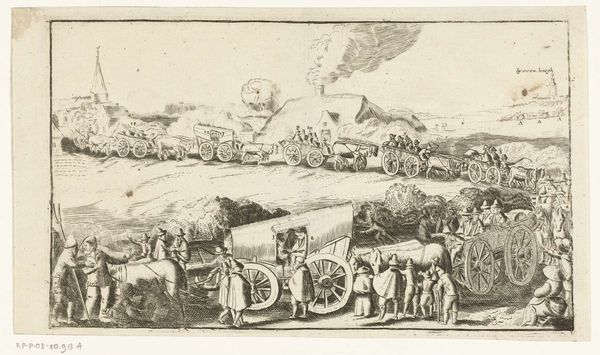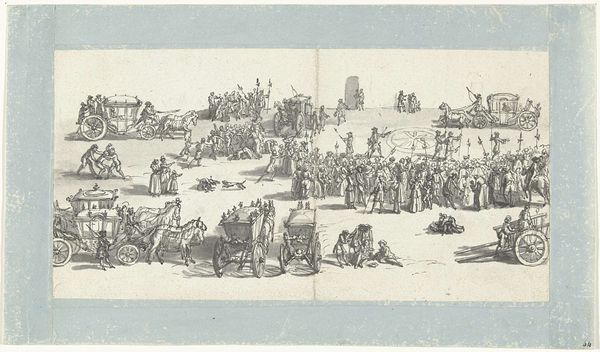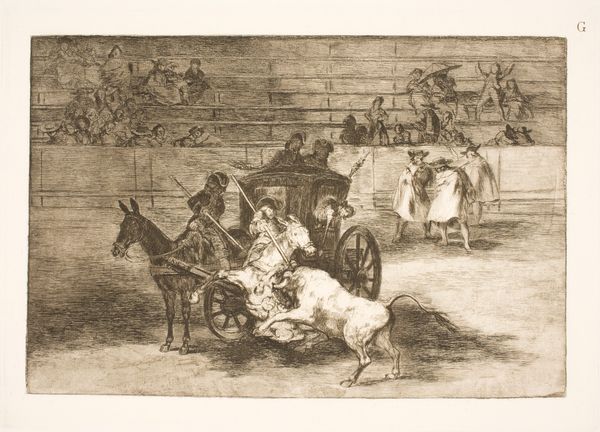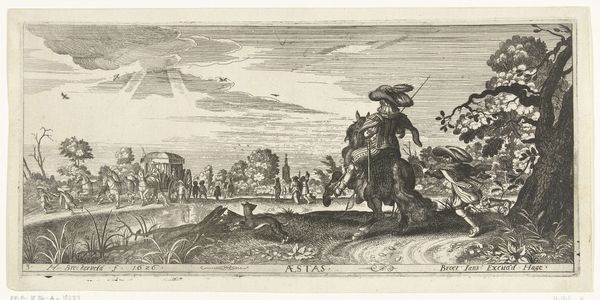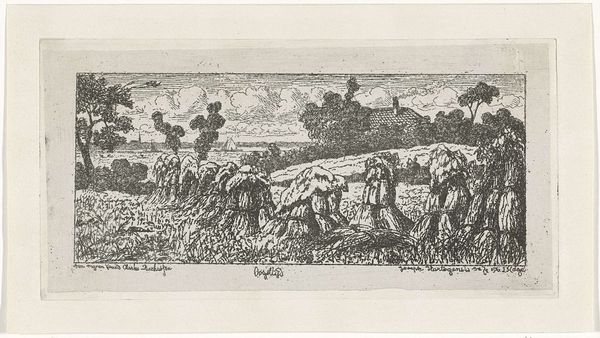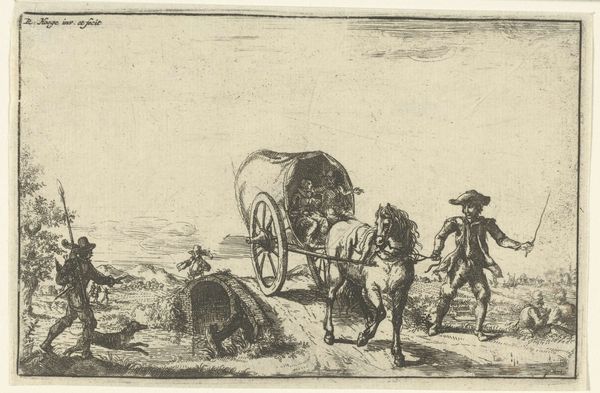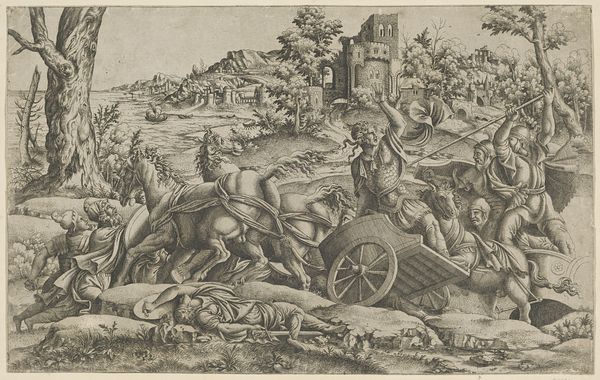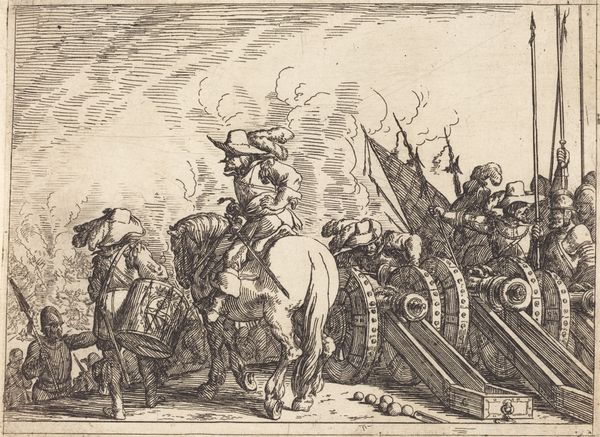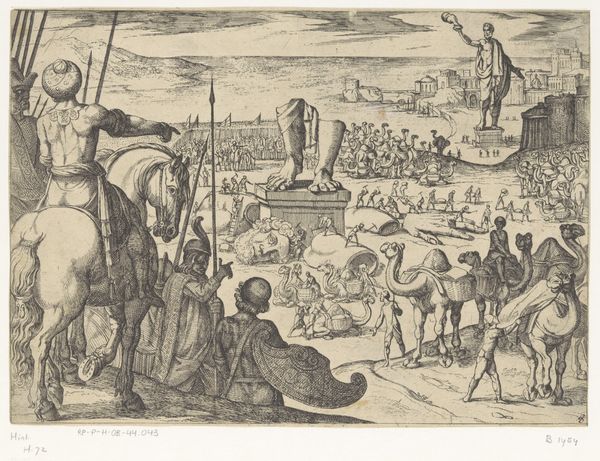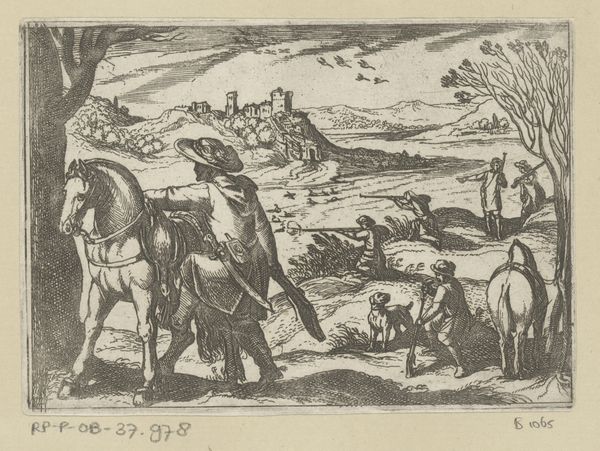
print, engraving
#
narrative-art
#
baroque
# print
#
figuration
#
line
#
history-painting
#
engraving
Dimensions: height 139 mm, width 280 mm
Copyright: Rijks Museum: Open Domain
Curator: This engraving, titled "Uittocht van de remonstrantse predikanten, 1619," captures a significant historical moment. Created in 1619 by an anonymous artist, the work depicts the exodus of Remonstrant ministers. Editor: My first impression is the overwhelming sense of forced movement and disruption— a somber procession painstakingly etched in stark lines. You can almost hear the creaking of the wagon wheels. Curator: Indeed. This scene echoes biblical exoduses, portraying the ministers and their families as spiritual refugees forced out by the Synod of Dort's condemnation of Remonstrant theology. Symbolically, this speaks to themes of persecution and resistance. Editor: And look at the labor involved: the pulling power of the horses, the physical toll of this expulsion enacted onto both people and animals. The lines are quite economic but powerful, and underscore that these events weren't pretty for those experiencing it directly. What choices had they? What materials did they bring? Curator: The wagons themselves, loaded with possessions, visually testify to what was sacrificed. Beyond the historical context, this exodus touches on broader themes of religious freedom and the cost of dissenting beliefs. This piece, through the artistic constraints of line engraving, renders those concerns almost universal. Editor: The choice of a reproducible medium like engraving adds another layer. This wasn’t just about commemorating an event, it was about disseminating a message, prompting debate, reaching a wider audience— potentially stoking resentment and inspiring solidarity among communities through accessible materials. Curator: Precisely. The print functions as a form of historical documentation but also a subtle piece of propaganda meant to sway public sentiment through visual rhetoric. Editor: Engraving as a form itself—with its precision, detail, and inherent limitations of value to convey mood and narrative, suggests a social need to communicate clearly a historical "truth." It seems that at least by looking at this rendering of truth, history shows its material demands. Curator: I hadn't considered the limitations so powerfully— perhaps now I see how symbolic value is always interwoven into any chosen approach and mode of dissemination. Thank you for shifting my reading of the work's import. Editor: Of course! Considering these historical artworks materially encourages new narratives to unfold with new awareness.
Comments
No comments
Be the first to comment and join the conversation on the ultimate creative platform.
